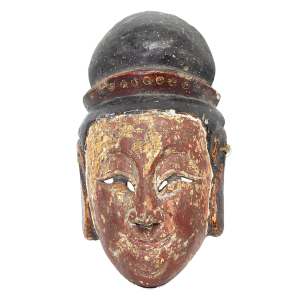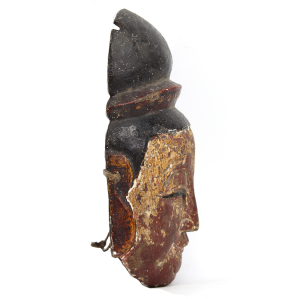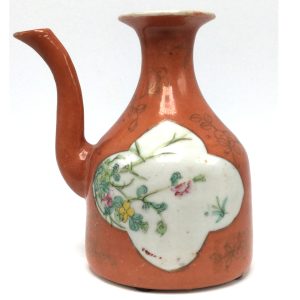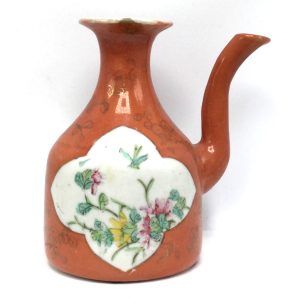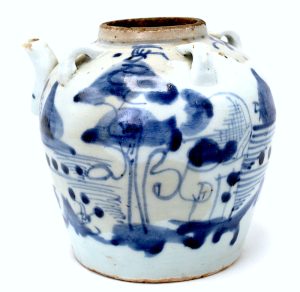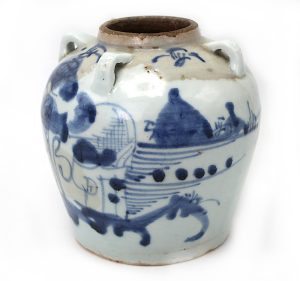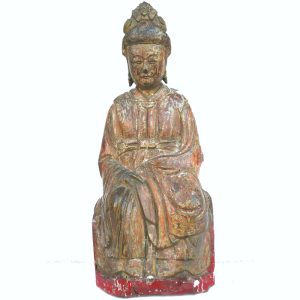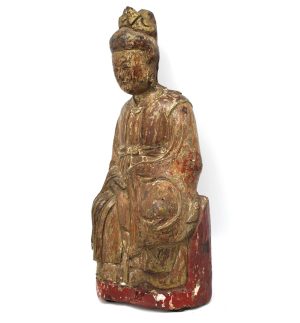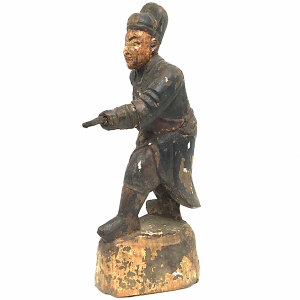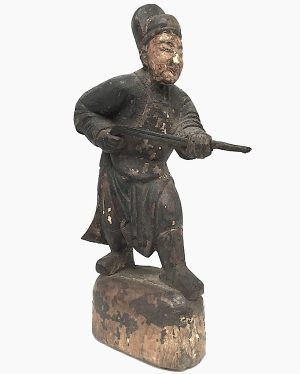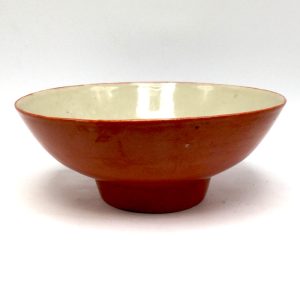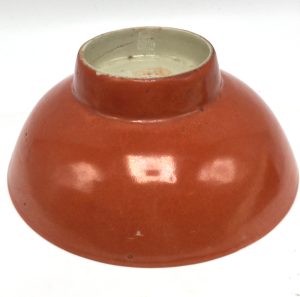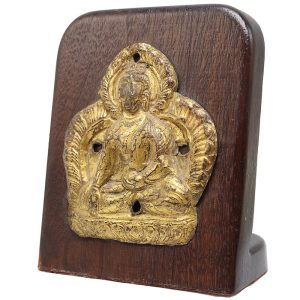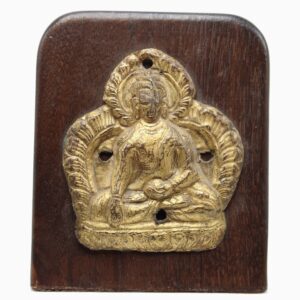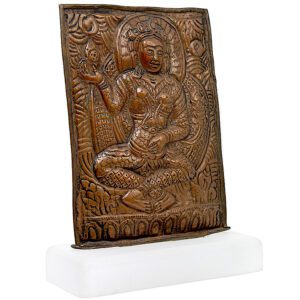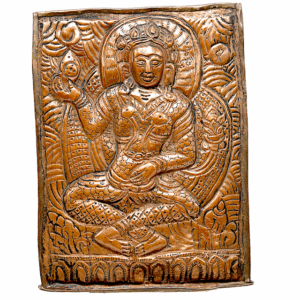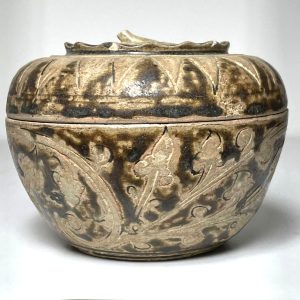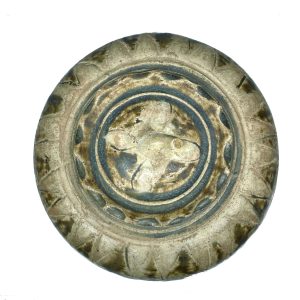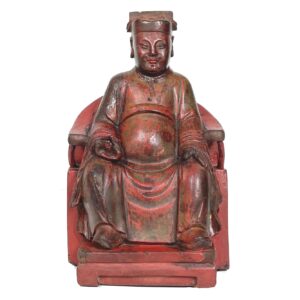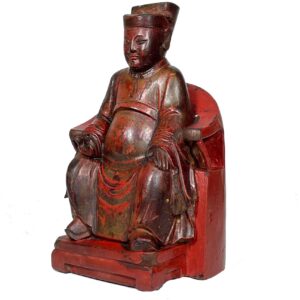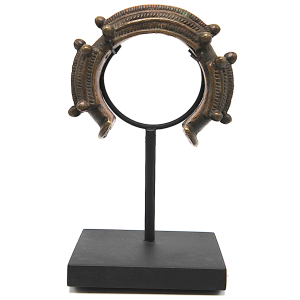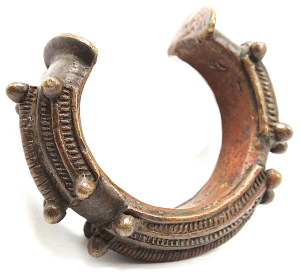Showing 37–48 of 89 results
-
Sale!


$395.00 Original price was: $395.00.$325.00Current price is: $325.00.
H: 9.25″ W: 5.75″ D: 2.25″ | FREE SHIPPING WITHIN CONTINENTAL U.S.
Chinese Noa opera mask is likely a female zhengshen – a benevolent gods with kind and honest nature and gentle disposition -symbolizing the power of good to defeat evil. Age and heavy use
-
Sale!


$650.00 Original price was: $650.00.$395.00Current price is: $395.00.
H: 7.75” W: 3.5″ D: 3.5″ | FREE SHIPPING within continental U.S.
Rare and charming carved attendant pair to flank deities on circular pedestals presenting boxed offerings with ribbons as wish for longevity.
-
Sale!


$235.00 Original price was: $235.00.$195.00Current price is: $195.00.
H: 4.875″ W: 4.5″ D: 3.25″ | FREE SHIPPING WITHIN CONtINENTAL U.S.
Elegantly shaped porcelain ewer with graceful spout, saffron-colored glaze, quatrefoil panels and hand-painted floral designs within a gold frame with sinuous gold leaf vines.
-
Sale!


$145.00 Original price was: $145.00.$105.00Current price is: $105.00.
H: 5” W: 5.25” D: 4.5” | FREE SHIPPING within continental US.
Blue and white ceramics like spouted jar with four loops, were used in home kitchens and restaurants to hold oil, sauces, soy or other liquids. Decorated with country scene in a landscape with by tall trees.
-
Sale!


$525.00 Original price was: $525.00.$295.00Current price is: $295.00.
H: 11.25″ W: 4.6″ | 3.25″ FREE SHIPPING WITHIN CONTINENTAL U.S.
Dense hardwood Queen Mother carving with phoenix in crown, holding robe across body, calmly seated on backless throne, much original polychrome and lacquer finish remains. Sealed consecrated cavity.
-
Sale!


$315.00 Original price was: $315.00.$275.00Current price is: $275.00.
H: 9 ” W: 3.625″ D: 3.5 ” | FREE SHIPPING WITHIN CONTINENTAL U.S.
Unique ancestor figure of a huntsman in the round standing on a domed pedestal, holding a flint lock, wearing a hunting coat, a two-level hat, traditional under- and outer-garment, and thick boots.
-
Sale!


$135.00 Original price was: $135.00.$110.00Current price is: $110.00.
H: 2.5” Dia: 5.75” | FREE SHIPPING WITHIN CONTINENTAL U.S.
Beautifully shaped footed porcelain bowl, thinly crafted with a coral saffron glaze on the outside on a deep foot. Fading red stamped seal of an unknown kiln on bottom. Likely from the Tongzhi Period 1862-1874.
-
Sale!


$595.00 Original price was: $595.00.$495.00Current price is: $495.00.
with stand H: 5″ W: 4.6″ D: 4″ | FREE SHIPPING WITHIN CONTINENTAL U.S.
Tibetan repoussé of Shakyamuni Buddha in Earth Witnessing mudra within a trefoil arch on a lotus base.
-
Sale!


$250.00 Original price was: $250.00.$165.00Current price is: $165.00.
H: 7.5″ W: 5.75 D: 2.5″ | FREE SHIPPING WITHIN CONTINENTAL U.S.
Copper alloy repoussé votive plaque of Vishnu surrounded with head and body aureoles. Symbols of his power as Universe’s Protector include a conch shell, his crown and lotus leaves symbolizing purity, truth, and unfolding of creation.
-
Sale!


$385.00 Original price was: $385.00.$325.00Current price is: $325.00.
Ht: 3.375” Dia: 4.625” | FREE SHIPPING within continental U.S.
Sawankhalok elegant mangosteen shape stoneware lidded bowl with raised calyx, cream and brown glazes, incised floral and geometric designs to store spices, cosmetics, betel nuts and medicine.
-
Sale!


$650.00 Original price was: $650.00.$385.00Current price is: $385.00.
H: 7.25” W: 4.625” D: 3.5” | FREE SHIPPING WITHIN CONTINENTAL U.S.
Finely carved ancestor displaying status symbols: official’s attire and hat, horseshoe chair with feet on pedestal. Painted and lacquered front and back in red, traces of gilt, colors of “fu” as a wish for wealth, health and long life, aged from years of use into a great patina.
-
Sale!


$295.00 Original price was: $295.00.$210.00Current price is: $210.00.
H: 3.125” W: 4” Thick: 1.125.5” Circum: 9.5” | FREE SHIPPING WITHIN CONTINENTAL U.S.
Heavy antique exquisite C-shaped Senufo manilla, divided into ornate sections, deeply carved, pairs of raised round metal pieces. Fine patina with wood and metal stand.
End of content
End of content

